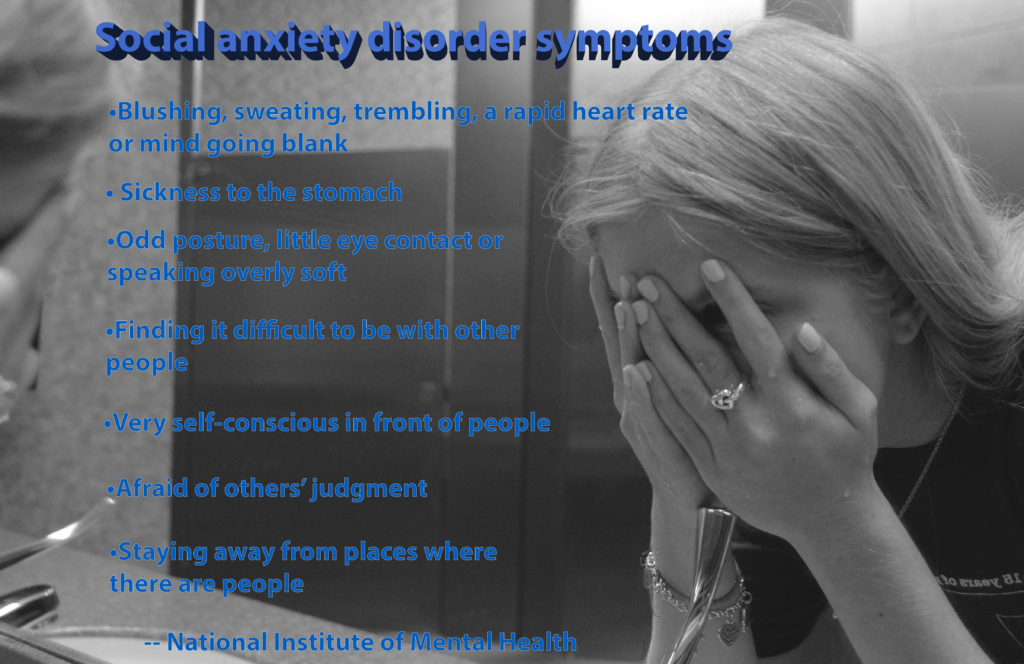Speaking in front of a large crowd can be terrifying for some people, resulting in a fast heart rate, sweaty palms and dizziness. If you are experiencing this type of fear, you may have glossophobia, a social anxiety or social anxiety disorder — also known as the fear of public speaking.
A social anxiety disorder is a mental health condition where social interactions cause irrational anxiety.
“Anxiety is about wanting to do well…. (there’s) nothing wrong with that,” said Charlotte Lankard, who helped establish the James Hall Center for Mind, Body and Spirit at Integris Hospital in Oklahoma City.
People with glossophobia typically have the fight-or-flight response, which creates the urge to run away from the situation to protect themselves, according to National Social Anxiety Center (NSAC).
For instance, when you’re making a presentation in front of a group you may experience shortness of breath and want to flee. This kind of event can be difficult for people with glossophobia or another social anxiety disorder.
“When threatened, your brain prompts the release of adrenaline and steroids,” the NSAC reports, which can drive your heart rate and blood presser higher.
Experts say the fear of being embarrassed, judged or rejected could be reasons behind having this disorder.
The National Institute of Mental Health recognizes that social anxiety disorder is much more than being shy.
“It is an intense, persistent fear of being watched and judged by others,” the organization said.
Glossophobia is not uncommon, affecting up to 75 percent of the population, according to an article on Psycom.net.
Everyone has some anxiety; however, some people have severe anxiety and, possibly, a disorder.
Visible symptoms of social anxiety disorder include sweating, trembling and a nauseous feeling.
Lankard’s center at Integris addresses not only physical health and illness, but also a person’s mental, emotional, social and spiritual well-being. She offered suggestions on how to manage glossophobia.
“Learning how to use your breath to relax your throat muscles will be the most beneficial and easiest way to help,” she said.
Managing glossophobia is all about relaxing the tension in your body to ease oxygen into the lungs and the brain, she said. When someone is tense, oxygen flow is reduced.
Lankard says to take long, slow, deep breaths through your nose and exhale out your mouth. That helps the shoulders to relax and relives tension.
“Yoga class is the best way to learn how to do this kind of breath work,” she added.
These tips are not only for people with glossophobia, she said. They can work for anyone experiencing forms of anxiety.
Common types of anxiety disorders include panic disorder or panic attacks and acute stress disorder, which is defined as a short-term anxiety experienced after a trauma.
Agoraphobia, on the other hand, is a long-term disorder described as “a fear of being in a public place where escape would be embarrassing or difficult,” according to a report on HealthyPlace.com.

Sources:
Healthy Place: https://www.healthyplace.com/anxiety-panic/anxiety-disorders/types-of-anxiety-disorders-list-of-anxiety-disorders
Lucida Treatment: https://www.lucidatreatment.com/blog/news/anxiety/social-anxiety-disorders-list-short-long-term-anxiety-disorders/
National Social Anxiety Center: https://nationalsocialanxietycenter.com/social-anxiety/public-speaking-anxiety/
Psycom: https://www.psycom.net/glossophobia-fear-of-public-speaking
National Institute of Mental Health: https://www.nimh.nih.gov/health/publications/social-anxiety-disorder-more-than-just-shyness/index.shtml






